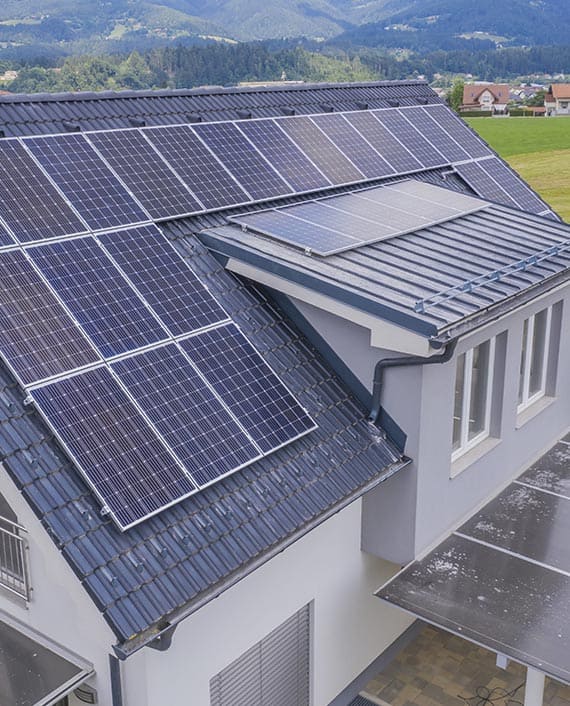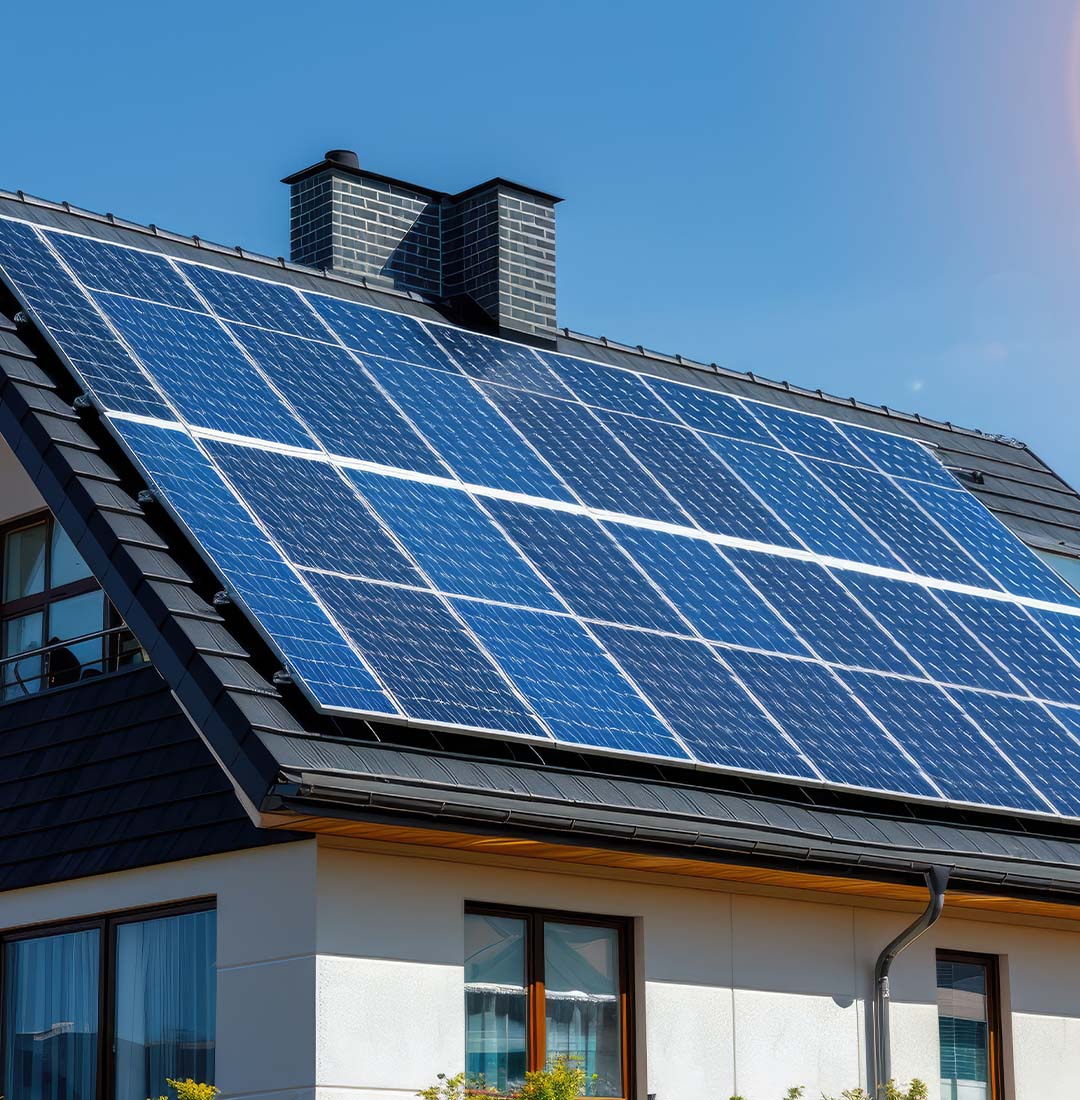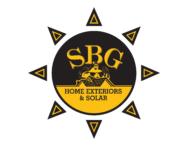Solar Roofing System

Installing Solar Roofing for Your Home
More homeowners are opting for solar roofing systems than ever before. Roth Capital Partners predicts a 30% growth or more in residential solar installations for 2024 – a pace that installation professionals are struggling to keep up with. Expressing an interest in solar energy is the first step.
As a homeowner, it’s essential to understand the costs, solar panel options, and the installation process before making your decision. Here are answers to some commonly asked questions to help you grasp the products, costs, and expectations moving forward.
How Does Solar Power Work? What’s the Process?
Solar energy is a clean and renewable way to power your home. Solar panels on your roof capture sunlight and generate electricity, which can then be converted into usable energy.
The four key components of a solar energy system include:
- Panels that collect sunlight and convert it into energy.
- An inverter that turns this energy into a usable form.
- Excess energy either goes back to the grid or gets stored in batteries.
- A net meter monitors your energy use and ensures your home has sufficient power.

Frequently Asked Questions
The cost of solar roofing in 2024 can vary depending on your location, the size of the system, and installation options. According to EnergySage, the typical cost for solar installation this year is around $11,000 after tax incentives. As more companies offer solar solutions and technology continues to advance, the cost has dropped significantly—about 30% lower than it was in 2019.
Depending on your location and electricity usage, a solar roof in 2024 could generate enough energy to meet your home’s yearly power needs, significantly reducing or eliminating your utility bills. With advancements in solar panel efficiency, fewer panels are needed to generate the same amount of energy compared to previous years.
According to the U.S. Energy Information Administration, the average household consumes about 11,000 kWh annually. Tennessee remains the state with the highest consumption, averaging 15,600 kWh per household, while Hawaii still has the lowest at 6,300 kWh per year.
Homeowners typically have two options: traditional solar panel systems installed on existing roofs or integrated solar roofing systems like solar tiles and shingles.
Traditional solar panels are mounted over the roof and cost around $13,000. Solar shingles, which serve as both roof and energy source, are much pricier, often exceeding $65,000, but offer a sleeker design.
